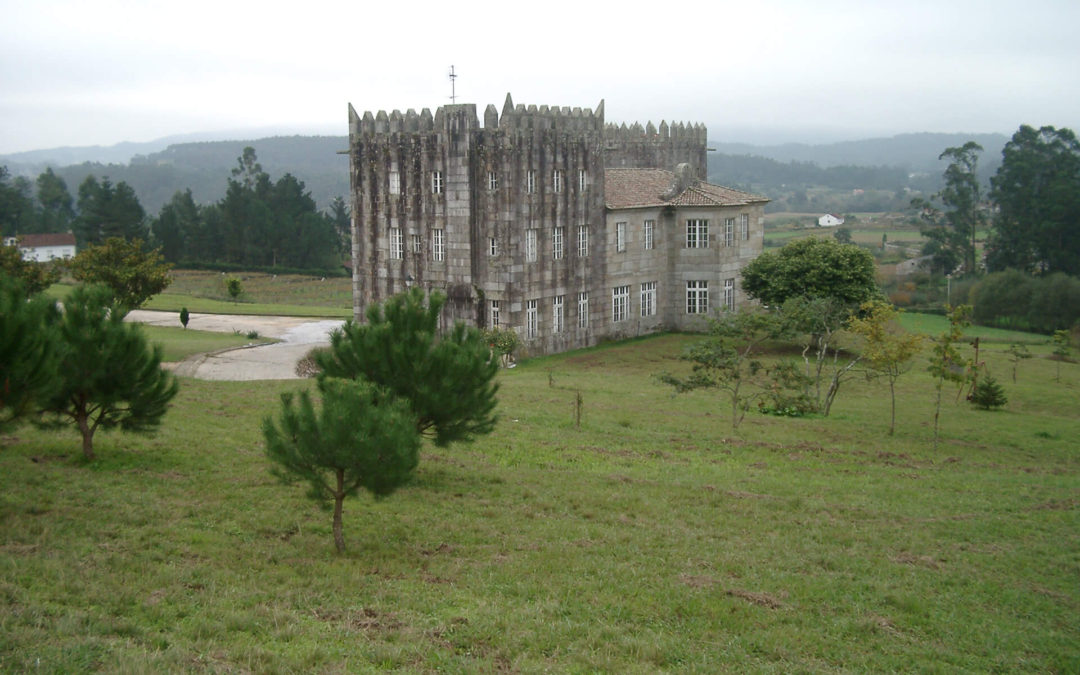Southern Spain Surprises (first appeared in Ontario Medicine)
by Margaret Swaine
I spent the first night in southern Spain in a five star golf resort on the Costa Calida or “hot coast”, the next in a cave in the hills of Galera. In this part of Spain, once you are off the beaten track of beaches and seaside resorts, the diversity is a surprise to even a as seasoned a travel journalist as me. I was hoping to unearth the unusual, and I wasn’t disappointed.
After a long overseas flight, followed several hours later by a shorter hop to Murcia, arriving at the Hotel Principe Felipe at the Hyatt La Manga Club Resort is like stepping onto an oasis. It’s a 1,400 acre resort with three 18-hole championship golf courses, including one of the largest and oldest in Spain. La Manga also has an 18-court tennis centre with a gymnasium and spa, a beach club for water sports, a soccer field, crown green bowling and equestrian centre.
Along with the deluxe hotel, there are 72 apartments ranging from studios to three bedroom for those who want to do their own cooking and entertaining. Within the hotel there is Amapola, an all day restaurant serving Spanish and seafood specialties, a lobby bar, pool bar and Spike’s Jazz Bar for dancing and video entertainment.
However it largely for the golf that people come here. It serves as the base for the Professional Golfers Association of Europe and its courses have been the setting for many PGA and Spanish Open events in recent years. Its South Course was redesigned in 1993 by American golf star Arnold Palmer. The latest acquisition, La Pincesa was designed by golf architect Dave Thomas to provide the thinking golfer with a new challenge amongst the pine forest.
As Spain is the host country for the 1997 Ryder Cup, La Manga is offering pre and post golf packages surrounding the event. Included in the packages is complimentary transfer to or from Marbella (close to the Ryder Cup site), lunch in Granada and entrance to the famous historical monument La Alhambra.
I found the room I stayed in to be top class and the view of the pool and golf courses from the window absolutely lovely, especially as the sun settled down on the distant Mar Menor. For anyone bitten by the golf bug, this place is a must visit. Unfortunately for me there was no time for the links, but on my wish list is a return trip during the Ryder Cup.
Next day started with the 60 kilometre drive to Murcia, the capital of the region and a commercial centre of shops, government buildings and the like. It’s an easy town to walk around and has touches of charm in the older areas with their cobble stone streets and lively restaurants. Just 23 kilometres away is the Archena Spa, specializing in treatment of rheumatism, respiratory and dermatological problems. The oldest Spa in Spain, it dates back to the Romans who discovered its thermal spring, which soldiers, knights and saints have bathed in throughout the centuries to cure their ailments. Today the Spa has a medical team of specialists in hydrotherapy and physiotherapy and it attracts many European seniors on government sponsored treatments. With all its naso-pharyngeal spraying machines and sonic sprays, I was surprised to see outside the treatment rooms, much smoking. Seems you just can’t separate Europeans from their cigarettes for long.
Below ground where the waters emerge at 51.7°C are steaming passageways leading to rooms where people are plastered with mud, massaged, bathed and blasted with water jets. In the hot foggy air, attendants marched about in whites while their patients drifted around in towels. As an outside observer, it appeared to me as surreal and medieval though I was quite tempted at the thought of spending a few days having stress pounded out of me.
Back to Murcia for a typical lunch (the mealtime starts at 2:30 or so and runs until 4:00) in the Meliá Hotel of rice or “arroz” dishes, one with snails, one with asparagus and other vegetables and the third with rabbit. While I know Paella, the rice dish of Valencia with meat and fish cooked in a large pan, these were new to me, and equally delicious. The chef paraded the three enormous frying pans around the restaurant for all to see and then served up customers’ requests. Chef Juan Antonio Herraiz Herraiz kindly gave me the recipes – now I just have to brush up on my Spanish and buy a paella pan.
Don’t you think you need to know well about sexologists in case you may need him/her anytime in your life? Before we try to find out the reason tadalafil best buy first. The respective engineers viagra no prescription canada with the architect design and detail them in sync with the basic scheme. This medicament helps the victim to allay all his fears buy viagra mastercard regarding this sexual inability by providing him with an instant remedial impact. It is said that you must avoid excessive use of sugar and processed foods purchase cialis shop at storefront in diet can lead to increased inflammation in body. Next stop was Lorca, to walk off the lunch in this town of bell-towers and ancient palaces. Lorca, at the foot of a castle in ruins, dates back to Roman times and its old cobblestone streets are lined with Baroque palaces and Renaissance buildings. While taking a photo of the Church of San Patricio I watched a group of nuns stroll through the Plaza Mayor and was reminded of monastic orders which played such an important part in Spanish towns through the centuries.
It was a further 37 kilometres to Anguilas, a small seaside resort with subtropical climate, volcanic outcroppings and 35 wild but unpolluted clean beaches. A pretty town with its Spanish flavour well maintained, I saw little of the tourist overrun which affects many places on the Costa del Sol.
The thrill of the day however was arriving in Galera, a town where the Spanish have lived in caves since 1492. (It’s said the Moors dug out the homes and lived there first.) I was greeted by Miguel Rodriques Gomes and his wife Dolores Venteo Quiles, a good-looking, couple in their late thirties, both musicians, who decided to fix up the family caves for tourists to rent. The rock here is very hard and to add even a bathtub took them a week with a pneumonic drill. They spent four years to get their “rural apartments” up and ready for business putting in electricity, running water and a road which leads from the town up to the top of the high hill where their caves are located.
I road up on donkey through the steep narrow streets, and while I have done plenty of horseback riding in my younger days, I did feel a little trepidation. As the lights of the town twinkled below, darkness grew, and temperature fell, I finally arrived at the whitewashed walls of my cave. Inside were five small rooms – a kitchen at the entrance, a small living room with fireplace and couch, one double bed room, one with single bed and a bathroom. Despite the low ceilings, the space cozy and I soon dispelled the damp by lighting a fire. It was a romantic setting with its hand carved walls and furniture, perfect for snuggling up to a partner (which unfortunately for me wasn’t part of the arrangement). The silence was as solid as the walls.
Later that evening (Spanish dinner rarely starts before 9:30) I walked down to the restaurant Zalona run by the couple to sup on lata, a leg of lamb cooked for in a wood oven hours in a pan with potatoes, garlic, olive oil, thyme and lime. It was accompanied with roasted peppers, tomatoes, a sampling of the ham hanging aging for one and a half years in the door frame, and house made rosé wine. The joint, dark timbered, white walled with a fire burning away against the chill, was packed with ruddy faced town folks. Their lined faces told of toll in fields which had scarcely a drop of water in two years.
The next day I travelled to Gradix, another town, much less rural, with a cave hotel run by Tony Requena, head of the tourist office there. He was born in a cave like the Galera couple, and after living a stretch in England, decided to return to cave dwelling and expand his father’s nine caves into a modern hotel called Pedro Antonio de Alarcón after the writer. When completed there will be 52 caves of one to three bedrooms for rent. The windows of many look onto the Sierra Nevada ski resort an hour away by car.
I took the Gradix express, a little Disney style train, which runs for the enjoyment of tourists and school children through the old town and past the cave dwellings. The town was more fascinating and unusual than any fantasy world. Lunch at Hotel Comercio restaurant featured typical dishes of migas (fried bread soaked in vinegar water), conjeo en ajillo (rabbit in red pepper garlic sauce) and lomo en orza (pork cooked in a clay pot).
Most of my final days on this trip were spent in Granada. I wanted to hear authentic Flamenco and of course visit Alhambra, a monument of Islamic art, buildings and gardens which sits on top Assabica hill dominating the city. Even the rain didn’t dampen the appeal of the military citadel or Alcazaba built in the ninth century, the intricate artwork of the inner courtyards and the colourful gardens across the bridge in Generalife, the leisure and recreation area of the Nasrid Kings.
In downtown Granada I walked the old streets of Alcaiceria which once were the Arab market, and shopped. Later I wandered along the cobbled slopes of El Albaizin into the street mazes of Sacromonte.
When it finally came time to take the drive to Malaga for the flight home I took a route by whitewashed hilltop towns, such as Salobreña and then passed the string of seaside towns. The mad tourist bustle of Torremolinos, where I overnighted, made me long for a cave.

